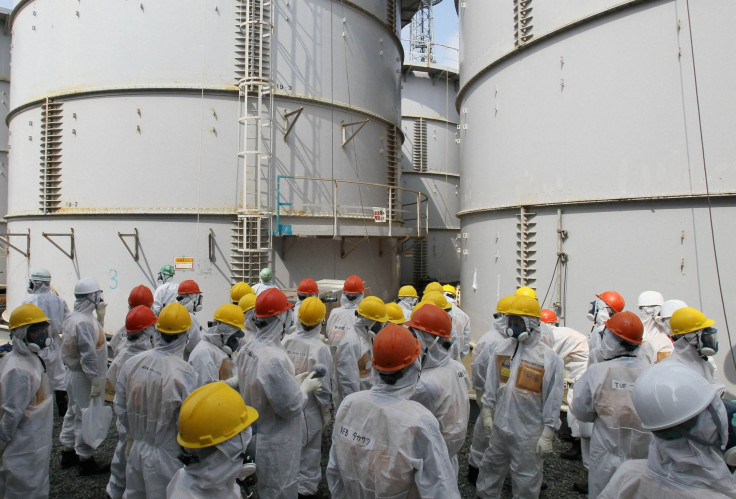Post-Fukushima Daiichi Debate Continues: Children Living Near Nuclear Power Plants Not At Increased Risk For Cancer

A study published yesterday in the British Journal of Cancer finds ‘little evidence’ of an increased risk of leukemia and non-Hodgkin lymphoma for children under 5 who live in the vicinity of a nuclear power plant.
Since the 1980s, many Europeans along with the British have been concerned over a possible link between nuclear power plants and childhood cancers. During that decade, a German research study found a childhood leukemia 'cluster' in the vicinity of a nuclear plant near Hamburg, while in England, TV investigators reported a higher number of cases among children living near the Sellafield plant.
Researchers, then, have good reason to revisit this important health issue; in fact, they have 500 good reasons. Children with Cancer UK reports that childhood leukemia, cancer of the blood, is the most common cancer in children, accounting for around one-third of all cases, with nearly 500 children diagnosed every year in the UK. More than half are under the age of 5.
Current Evidence
In the current study, scientists from the Childhood Cancer Research Group in Oxford examined data on 9,821 British children diagnosed with leukaemia or similar cancers between 1962 and 2007. The researchers analyzed where the children were born, where they lived, and when they were diagnosed — all of the children in the study, though, were 5 or younger. BBC News reports that the resulting information was then compared with data from the National Registry of Childhood Tumours, which has kept records on nearly all children diagnosed with cancer since 1962.
The researchers found no increased risk among children either born near or living near a nuclear point when diagnosed. “Risk estimates are incompatible with comparable ones published in a recent German case–control study,” wrote the authors.
The German study to which they refer — and the methods of which they duplicated — was published in Environmental Health Perspectives in 2007. German researchers found a significantly higher incidence of childhood leukemia in the region surrounding two nuclear establishments southeast of Hamburg when compared with childhood leukemia incidence for Germany as a whole. “To date, no unique hazards have been identified in this population,” the authors wrote. “The fact that the elevated rates have persisted in this community for more than 15 years warrants further investigation.”
Hazel Nunn, head of health information, found the conclusions of the British study ‘heartening’ when comparing them to the findings of the German team. "But these results can't rule out any possible risk, so it's still important that we continue to monitor both radiation levels near nuclear power plants and rates of cancer among people who live close by," Nunn told BBC News.
Nuclear Power
"Nuclear energy is used to generate around 11 percent of the world's electricity with almost no greenhouse gas emissions," the World Nuclear Association, an international organization that promotes nuclear energy, states on its website. During 2011, the U.S. generated roughly 19.2 percent of its total electricity in 65 nuclear power plants; its first plant was opened in 1958.
Both Russia and England opened power plants prior to this. During 1956, the first nuclear power plant began operations in the United Kingdom, where currently about one-sixth of all electricity is generated by nine nuclear power plants and one nuclear reprocessing plant. Seemingly, the English have no issue with nuclear power. That said, in Scotland, where three of the UK plants are located, the government (backed by the Scottish Parliament) has refused to allow any more plants to be built.
By comparison, less than two months after the Fukushima Daiichi disaster in Japan, Germany announced plans to completely end nuclear energy by 2022. Germany began immediately by permanently closing six plants that had been temporarily shut down for testing in March 2011, and two that had been closed for years because of technical issues. The remaining nine nuclear power plants in Germany are scheduled for closure between now and 2022.
As of May 5, 2012, Japan has effectively abandoned nuclear-produced electrical power, though shutdowns of its many reactors — 50 — were 'officially' only for purposes of maintenance or inspection. The Japanese people appear to be committed to continuing the closures permanently, though; a total of 60,000 people marched in Tokyo in September 2011 as part of an anti-nuclear rally in the aftermath of the Fukushima Daiichi tragedy.
Sources: Bithell JF, Murphy MFG, Stiller CA, et al. Leukaemia in young children in the vicinity of British nuclear power plants: a case–control study. British Journal of Cancer. 2013.
Hoffmann W, Terschueren C, Richardson DB. Childhood Leukemia in the Vicinity of the Geesthacht Nuclear Establishments near Hamburg, Germany. Environmental Health Perspectives. 2007.
Published by Medicaldaily.com



























